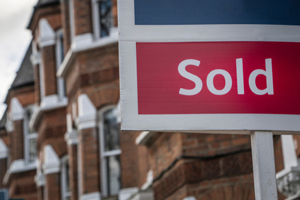Seventy-four per cent of lenders are expecting green mortgages to become a larger part of the wider mortgage market in the future, new research from the Intermediary Mortgage Lenders Association (IMLA) has revealed.
The findings also showed that 13% have already seen a rise in customer interest for green mortgages since the start of the COVID-19 crisis.
IMLA surveyed lenders, brokers and consumers, finding that one in five homeowners said they would be willing to pay an extra £100 a month for a mortgage if it helped to lower their carbon footprint.
Lenders and advisers are responding to this demand from consumers, IMLA stated, with 29% of lenders suggesting they plan or have already launched a green mortgage product. A similar percentage of intermediaries (35%) also indicated they intend to advise clients on green mortgages in the future.
IMLA executive director, Kate Davies, commented: “Green mortgages might be in their infancy, but the indications are there that this is a part of the mortgage market that is set to grow in the years ahead.
“Lenders and advisers are already recognising the opportunities presented by green mortgages as consumers ‘switch on’ to eco-friendly products and recognise the devastating potential of climate change. Now, with a COVID-19 lockdown giving us all a temporary view of a world with reduced carbon emissions, the growth of the green mortgage market could accelerate yet further.”
IMLA suggested that its research also uncovered several barriers facing consumers which could restrict the potential of the green mortgage market.
The sector is currently a small part of the overall mortgage market and awareness about green options remains low, with 43% of borrowers indicating they had never heard of a green mortgage.
IMLA also found that advisers (71%) and lenders (74%) would welcome intervention in the form of financial incentives for consumers, such as those recently announced by the chancellor as part of the government’s Green Homes Grant programme.
However, more than half (52%) of both groups also wanted to see more in the way of incentives for lenders to encourage more providers to offer green mortgages.
“Despite the potential for green mortgages to be an ever-present option for customers, the issues and barriers surrounding these products are much wider than the UK mortgage market,” Davies added.
“The government has already committed to making Britain a carbon-neutral nation by 2050. Upgrading the UK’s existing housing stock, to make homes across the country more energy efficient, will be critical to that goal.
“Government initiatives like the Green Homes Grant clearly remain vital, as does a broader approach to tackling ethical and sustainable business practices with the creation of more energy efficient homes, jobs, public transport upgrades and sustainable city-planning projects.”
Latest News
-
Nationwide fined £44m for financial crime control failings
-
Targeted support applications to open from March 2026
-
Second charge mortgage market continues growth
-
19 firms join forces to launch new retail investment campaign
-
Four in five bridging professionals confident about 2026 market outlook
-
GDP falls 0.1% month-on-month in October
Perenna and the long-term fixed mortgage market

Content editor, Dan McGrath, spoke to head of product, proposition and distribution at Perenna, John Davison, to explore the long-term fixed mortgage market, the role that Perenna plays in this sector and the impact of the recent Autumn Budget
The role of the bridging market and technology usage in the industry
Content editor, Dan McGrath, sat down with chief operating officer at Black & White Bridging, Damien Druce, and head of development finance at Empire Global Finance, Pete Williams, to explore the role of the bridging sector, the role of AI across the industry and how the property market has fared in the Labour Government’s first year in office.
NEW BUILD IN FOCUS - NEW EPISODE OF THE MORTGAGE INSIDER PODCAST, OUT NOW

Figures from the National House-Building Council saw Q1 2025 register a 36% increase in new homes built across the UK compared with the same period last year, representing a striking development for the first-time buyer market. But with the higher cost of building, ongoing planning challenges and new and changing regulations, how sustainable is this growth? And what does it mean for brokers?
Does the North-South divide still exist in the UK housing market?

What do the most expensive parts of the country reveal about shifting demand? And why is the Manchester housing market now outperforming many southern counterparts?
In this episode of the Barclays Mortgage Insider Podcast, host Phil Spencer is joined by Lucian Cook, Head of Research at Savills, and Ross Jones, founder of Home Financial and Evolve Commercial Finance, to explore how regional trends are redefining the UK housing, mortgage and buy-to-let markets.
In this episode of the Barclays Mortgage Insider Podcast, host Phil Spencer is joined by Lucian Cook, Head of Research at Savills, and Ross Jones, founder of Home Financial and Evolve Commercial Finance, to explore how regional trends are redefining the UK housing, mortgage and buy-to-let markets.
© 2019 Perspective Publishing Privacy & Cookies











Recent Stories